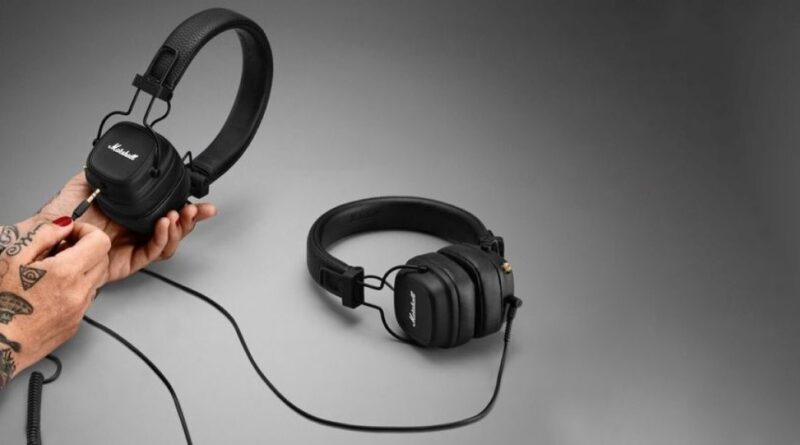Tips To Choose Best Wireless Headphones
Buying headphones is not an easy task, especially if you need to meet a certain budget. If you approach this issue thoroughly, then here are the characteristics you should pay attention to.
Bluetooth technology
Support for certain data transfer methods determines the compatibility of headphones with other devices. Previously, this characteristic was one of the keys. Now, headphones with signal transmission over radio communication have gone down in history – almost the entire wireless market is occupied by Bluetooth models.
They save battery power and receive sound from smartphones, tablets and other gadgets without additional accessories.
The newer the Bluetooth version, the less energy is spent on transmitting and receiving sound and the better its quality. The latest modification available on the market is Bluetooth 5.3. In order for you to use its full potential, both your devices must support the version: headphones and a transmitting device.
If two gadgets with different Bluetooth options are connected, then data transfer between them will be limited by the capabilities of the older one.
Audio codec support
Audio codecs are responsible for encoding or decoding audio data. That is, they determine how information is compressed and at what speed. For the codec to work correctly, it must be supported by both the headphones and the transmitting device.
Form factor
According to the type of design, all headphones – including wireless ones – can be conditionally divided into internal and external. The former includes miniature devices that are inserted into the ears: “droplets”, “plugs” with silicone nozzles and various sports models connected by wire, but connected to a smartphone via Bluetooth.
As a rule, internal headphones do not provide the highest quality sound, and their dimensions are not enough to accommodate a powerful battery. But at the same time, they are quite suitable for activities and use on the road.
External headphones are noticeably larger. They are less convenient, but they last longer without recharging and usually guarantee a more spacious and high-quality sound. Almost all models have cups with ear pads and a headband that connects them.
It is also worth noting that both on-ear and full-size headphones can have a removable wire that allows you to enjoy music when the battery is dead, or connect several headphones to each other.
Soundproofing and noise reduction
Loud outside noise can ruin your favorite songs or interrupt important phone conversations. To protect yourself from it, take a closer look at models with increased sound insulation.
At a minimum, you should pay attention to the internal “plugs” that completely cover the ear canal and block some of the noise, or external closed-type headphones. The latter have reliable isolation from the penetration of sounds in any direction.
Even better, if such isolation is complemented by active noise cancellation (ANC). It recognizes environmental sounds through microphones and automatically blocks some of them – for example, road noise, the rumble of an airplane or the “buzz” of the office.
Of course, this technology drains the battery of the headphones more and makes them more expensive. But in the last one and a half to two years, models with ANC appear even among budget solutions.
Autonomy and charging
To ensure that the headphones you choose do not sit down too quickly, pay attention to the battery life before buying. The technical specifications almost always indicate the number of hours that the device can withstand without recharge.
All things considered; external headphones that support the latest Bluetooth versions usually last longer on batteries than others.
Some full-size models can last more than 20 hours without recharging, while in-ear models average 5-7 hours. True, TWS options are easy to feed in a case, for example, on the way to work. With large headphones, you will need an outlet, power bank or laptop.
Audio Specifications
When choosing wireless earbud, you can limit yourself to three audio options:
- Speaker sensitivity. This is essentially the volume of the headphones. In order not to buy too quiet, choose a model with a sensitivity of 95 dB or more. But always remember that excessive use of loud music can damage your hearing.
- Frequency range. This is the range of sounds that headphones can reproduce. Human hearing recognizes audio signals between 20 and 20,000 Hz. Choose models that meet or exceed this range. Then they will give out all the sounds available to the ear.
- Resistance (impedance). This setting affects the volume and overall sound quality. For most mobile devices, headphones with an impedance of 16-32 ohms are optimal. For home equipment, it is better to choose a device with a higher impedance.
Even if the headphones are identical in their characteristics, they can sound completely different. The sound is determined by the mass of parameters and features, as well as the individual perception of each person.
Buyer’s checklist
Determine the main scenarios for using headphones – on the street, in the office or, for example, in the gym. The choice of form factor may depend on this.
Choose headphones that support the latest versions of Bluetooth, especially if you don’t plan to change them in the next few years.
If you are going to listen to music only from your smartphone, check the codecs it supports.
Take a closer look at the active noise canceling function if you want to protect yourself from external noise as much as possible.



